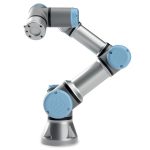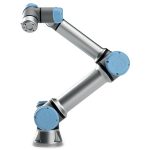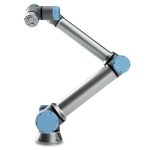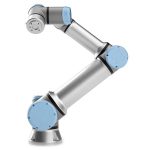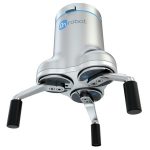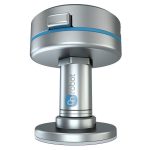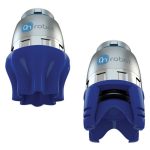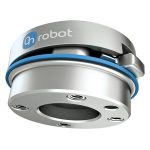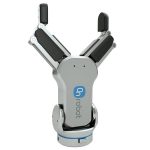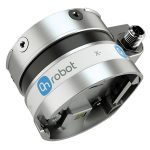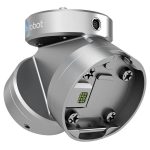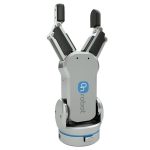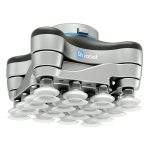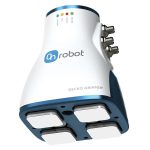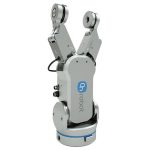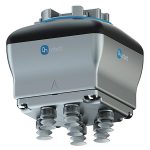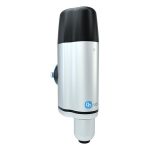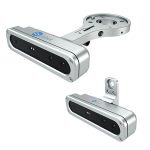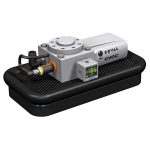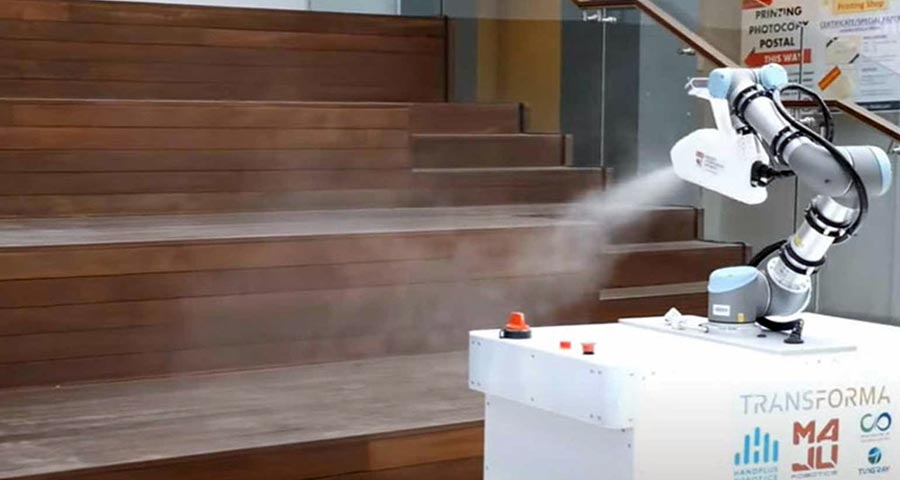The global pandemic has seen massive demand for effective deep cleaning and disinfection technologies that don’t involve direct human contact with potentially infected areas. In mid-April, researchers at Nanyang Technological University. (NTU) presented their solution to this problem with the unveiling of the eXtremeDisinfection roBOT (XDBOT), which comprises a UR5 cobot fitted with an electrostatic spray nozzle, all mounted on a mobile platform.
Researchers programmed the cobot to mimic human hand movements so that it can get into hard-to-reach areas such as under beds and tables – a feature that’s missing from traditional disinfection robots that are not as dexterous. The system’s spray nozzle and large 8.5 liter disinfectant tank enable XDBOT to spread disinfectant quickly over a wide area, without sacrificing deep-cleaning capabilities.
Another important feature of the XDBOT is that it’s semi-autonomous. This allows cleaners to remotely control the bot via tablet or laptop, thereby avoiding contact with potentially infected areas.
Capable of running continuously for four hours on a single charge, XDBOT has been successfully tested in public areas in the NTU campus and the team is preparing to trial the technology at local public hospitals.
Also in April, a team at the University of Southern California (USC) revealed its prototype Agile Dexterous Autonomous Mobile Manipulation System-UV (ADAMMS-UV). It’s similar to the XDBOT in that it uses a UR5 cobot mounted on a mobile platform. But instead of spraying disinfectant, the ADAMMS-UV uses a UV light wand with an additional UV light source mounted on the base, the UV light is able to break down the DNA of the virus
Fitted with a gripper, the ADAMMS-UV can manipulate objects, enabling the cleaning of hard-to-reach surfaces. Like the XDBOT, the ADAMMS-UV can be remotely operated, ensuring that human workers maintain social distancing regulations and avoid possible infection. Cameras mounted on the cobot assist human operators with navigation. A time-of-flight camera on the robotic arm scans its surroundings and uses infrared light to determine depth. Using this visual information, the ADAMMS-UV then builds a 3D model of the area to be disinfected.
“We actually started developing the mobile cobot application as a solution for machine tending,” says Satyandra Gupta, director of USC Center for Advanced Manufacturing. “We chose a UR5 cobot for this due to the built-in safety, that meant we could use it in collaborative mode around people. UR is the leader in the field of cobots so it was a clear choice for us,” he says, explaining that when the COVID-19 crisis hit, USC was required to clean its own labs. “A lab is complex, you can’t just spray everything with bleach. We looked into UV disinfection and realized that this could work, however, the solutions on the market were for more large-scale disinfections of rooms and would not be able to for example open a drawer, take out an item, place it down and place the disinfection wand over it,” says Gupta, adding that his team is now working on incorporating a second UR5 cobot, so ADAMMS can disinfect twice as fast; one arm can i.e. open a drawer while the other arm carries the wand.
The team has successfully tested the prototype in the lab. Further testing and validation is underway to ensure the technology can be used in public places including hospitals, hotels and offices.
If you have any questions or need assistance in finding the right Cobot please contact us on 051 643000.

